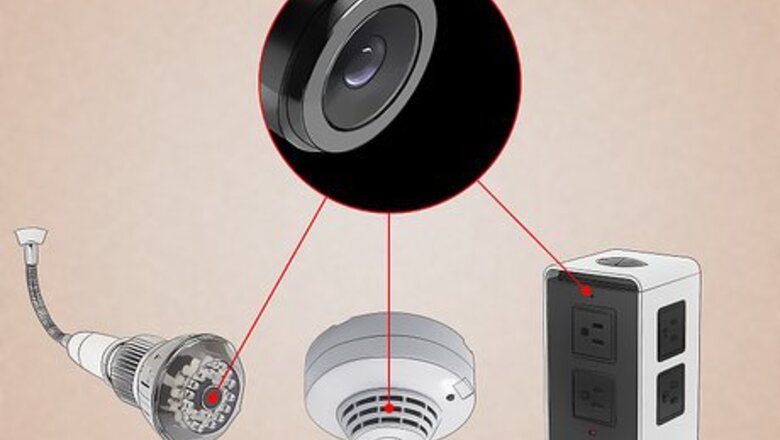
views
Using Basic Techniques
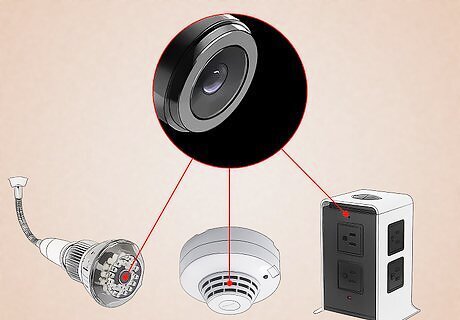
Know where to look. Unfortunately, hidden cameras can be as small as the end of a pen, making it easy to hide them virtually anywhere. When searching a room for hidden cameras, look in places such as the following: Smoke detectors Electrical outlets Power strips Night lights Books, DVD cases, or video game cases Shelves Laptops Desktops Computer mice Small holes in the wall Pictures or other decorations Stuffed animals Lava lamps Clocks, watches, USB, or clothes hooks
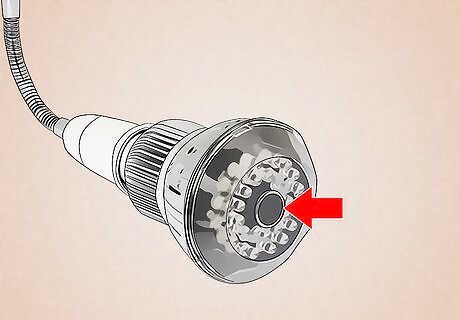
Understand what part of the camera to look for. Most of the camera will usually be hidden, but the camera's lens must always be visible for the camera to be effective. This means that you can always spot a camera by looking for its lens. Any camera installed by an expert will not display wires or lights, but the lens must be visible.
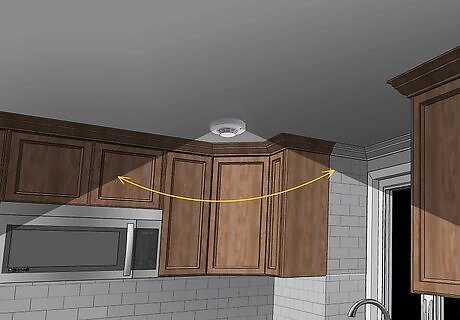
Consider the best angle for coverage in a room. It's easiest to search for the camera from the perspective of someone wanting to record the center of activity in a room; for example, if you're worried someone is recording your kitchen, it doesn't make much sense to look for the camera in the floorboards. Corners of rooms often provide the best picture of the whole room, though cameras placed in the corner are often less inconspicuous than most hidden cameras.
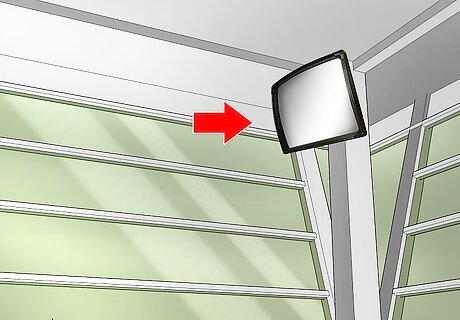
Look for oddly placed mirrors or decorations. While things like stuffed animals and books can be placed pretty much anywhere, mirrors and decorations (e.g., pictures or paintings) often aren't. If you see a mirror or decoration at a weird height or in an otherwise odd location, there may be a hidden camera embedded. You can check to see if a mirror is a two-way to confirm whether or not a camera is embedded. If the mirror is a two-way, it's suspicious at the very least.
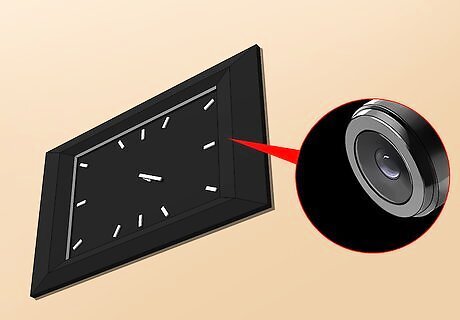
Check stuffed animals and clocks. The eyes of stuffed animals and the screws or details on clocks can often conceal a camera. Since stuffed animals and clocks are both easy to move, consider removing them from your vicinity if you suspect that they are hiding cameras.
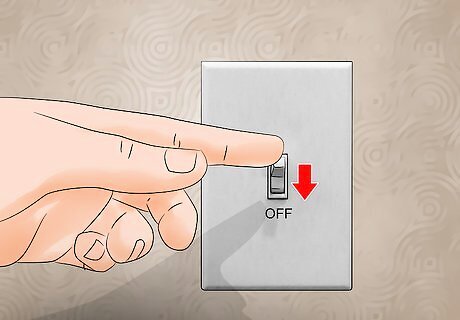
Turn off the lights to search for camera indicators. Most cameras have red or green lights which blink or display steadily; if the hidden cameras were poorly installed, you may be able to see these lights when you turn off the room's lights. It is unlikely that anyone who installed hidden cameras would be too sloppy to hide the camera's indicator lights, so don't rule out hidden cameras if you don't see any.
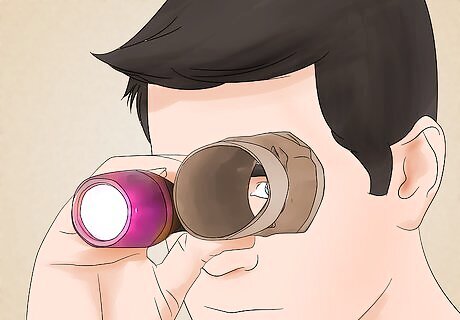
Create a DIY camera detector. Professional camera detectors can cost several hundred dollars, but you can make a cheap one with nothing but a paper towel and a flash light: Turn off all the lights in the room, and draw the blinds (or wait until nightfall). Hold up a paper towel roll to one eye, then close the other eye. Place a flashlight at eye level (in front of the closed eye) and turn on the flashlight. Scan the room, keeping an eye out for glints as you do so.
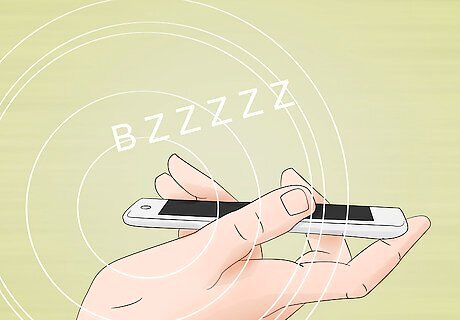
Use your cell phone to scan for interference. This isn't a perfect system, but it will help you find certain types of cameras: Make a call on your cell phone, and leave the caller on the line. Walk around the room with your phone on speakerphone. Listen for crackling, clicking, or buzzing from your phone.
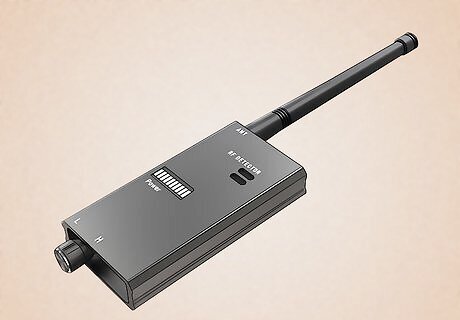
Purchase and use an RF detector. An RF detector allows you to scan for hidden cameras by physically sweeping the detector around a room and listening for feedback; if you hear sudden crackling or beeping through the detector, there's a good chance you'll find a hidden camera in front of it. When using an RF detector, you'll need to unplug any items which broadcast radio signals. These include things like kitchen appliances, baby monitors, routers and modems, gaming consoles, TVs, and so on. You may need to cycle through several different frequencies before you find the correct one. RF detectors can be found anywhere from electronics stores to Amazon, and you can expect to spend between $15 and $300 on one. You can also use an RF detector to scan for wireless microphones.

Search for public cameras. While public cameras tend to be less nefarious and more conspicuous than their personal counterparts, it may be good to know where the nearest "hidden" camera is if you're attempting to dispute a traffic incident or something similar. You can usually find cameras in the following locations: ATMs Store ceilings Two-way mirrors in stores and high-profile shops (e.g., jewelry fronts) Gas stations Traffic lights
Using Your Smartphone's Front Camera

Open your smartphone's Camera app. On an iPhone, you'll usually find this app on the Home Screen, while Android users can search for the Camera app in the App Drawer.
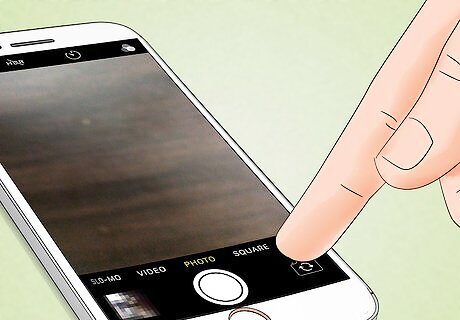
Switch to the front-facing camera. If the camera isn't showing your face while you hold the screen side facing you, tap the "Rotate" icon (which usually resembles a circular arrow or two) to flip it. You probably won't be able to perform this process with the rear camera. Most rear cameras have infrared filters, which will prevent the camera from detecting infrared light. The camera must be able to detect infrared light for this method to work.
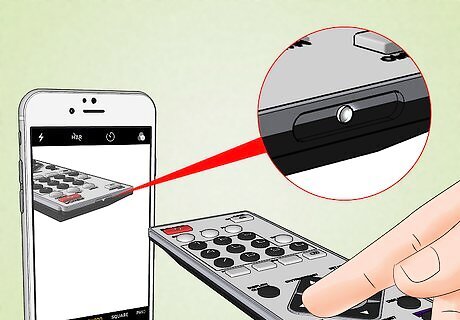
Verify that your smartphone can see infrared light. In order to search for hidden cameras, your smartphone's front camera cannot have an infrared filter. You can determine whether the camera has an IR filter by using a TV remote: Point a remote control at the camera. Press any button on the remote control. Look for a flash on the remote control's front light.
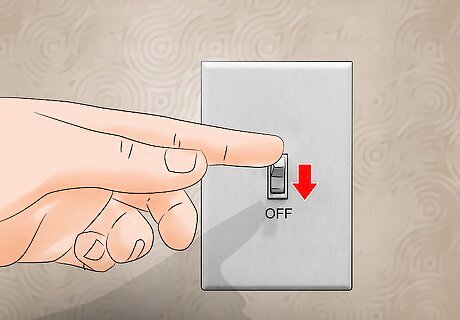
Turn off the lights in the room you want to scan. In order to scan for infrared light, you'll need to have the room as dark as possible. If there are any other lights in room (e.g., night lights, power strip indicators, etc.), unplug their sources if possible.
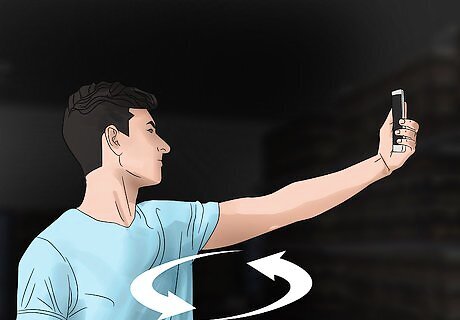
Use your smartphone's camera to look for flashing lights. With your phone's screen facing you, rotate while looking for flashing spots. If you see a flashing area, it's most likely a hidden camera's IR light.




















Comments
0 comment